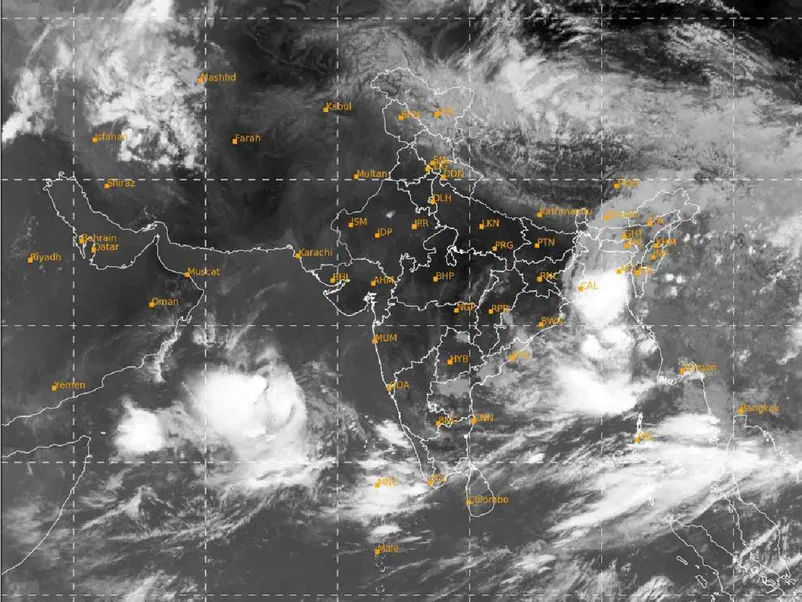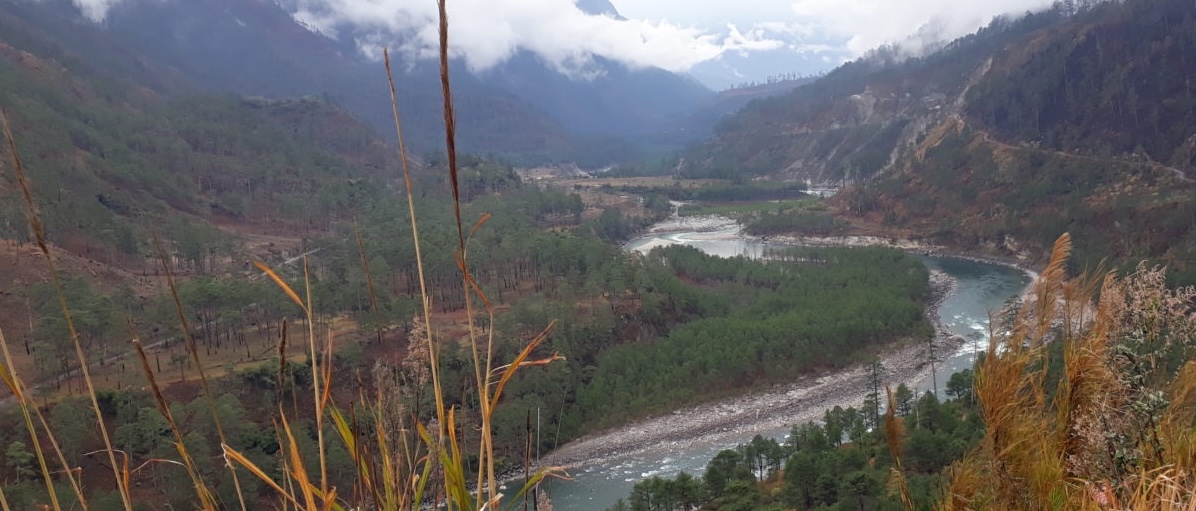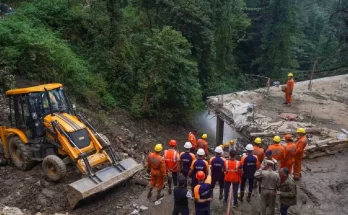El Nino phenomenon may have an effect on intensity of Indian monsoon.

Satellite image taken the location of Cyclone Biparjoy in the Arabian Sea on June 8. (Credit: PTI Photo)
New Delhi: Claiming that tropical cyclones impact the El Nino Southern Oscillation (ENSO), a global ocean atmospheric phenomenon, a study has drawn attention to the previously unidentified two-way climatological interaction between tropical cyclones and ENSO.
The findings of the research paper become significant as ENSO has a correlation with southwest monsoon rainfall in India and meteorological agencies, including India Meteorological Department (IMD), have already announced a possibility of El Nino by August end. In fact, the Bureau of Meteorology, Australia, on June 6, moved from El Nino “watch” to El Nino ‘Alert’, meaning, there is around a 70% chance of an El Nino developing this year.
Incidentally, the IMD has on Thursday declared monsoon onset over Kerala, a whole seven days late from its normal onset date of June 1, even as a ‘Very Severe Cyclone Biparjoy’ is roaring in the Arabian Sea.
According to World Meteorological Organization (WMO), over the past 50 years, 1942 disasters have been attributed to tropical cyclones, which have killed 7,79,324 people and caused economic losses worth $1407.6 billion.
ENSO, El Nino, La Nina
A recurring climate phenomenon, El Nino Southern Oscillation (ENSO) is associated with change in Sea Surface Temperatures (SSTs) in the central and eastern Pacific Ocean. El Nino occurs when the SSTs are higher than average in eastern tropical Pacific and simultaneously, there is a weakening of trade winds. Conversely, La Nina is characterised by below average SSTs in central and eastern tropical Pacific along with the strong trade winds.
El Nino typically has a warming influence on global temperatures while La Nina has the opposite effect.
According to India Meteorological Department (IMD), periodicity of monsoon is largely controlled by the global ocean atmospheric phenomena such as ENSO.
Earlier, while declaring the second stage monsoon forecast, IMD Director General Mrutyunjay Mohapatra had said that El Nino impact will be observed in the second half of the monsoon season in India. It means, for the June to September monsoon season, the impact would be seen in August or later.
By the way, till early 2023, the world has witnessed three consecutive years of what the WMO described as “unusually stubborn and protracted” La Nina, which had influenced temperature and rainfall patterns in different parts of the world.
Tropical Cyclones and ENS
A team of researchers led by Hui Li of the National Centre for Atmospheric Research (NCAR) of the United States, sought to show how Tropical Cyclones could be essential to the characteristics of ENSO.
In the study published in March 2023 study ‘Role of Tropical Cyclones in Determining ENSO Characteristics’ published in the journal Geophysical Research Letters of the American Geophysical Union (AGU), Li and the team said: “ENSO can influence global tropical cyclone activity by altering the large-scale conditions. Tropical Cyclones, as transient yet powerful weather events, can cause strong air-sea interactions over the tropical ocean that may consequently influence the climate mean state.”
“Our results indicate that tropical cyclones play a fundamental role in producing the ENSO characteristics we experience today in the climate system and point to a previously unidentified two-way climatological interaction between tropical cyclones and ENSO,” the researchers said.
Connection with Indian monsoon
Globally, the April and May 2023 Sea Surface Temperatures (SSTs) were the warmest on record for their respective months. The global area-average SST for April was 0.69 degrees Celsius above the 1961-1990 average, exceeding the previous April record of 0.67 degrees Celsius in 2019. Global SST for May was 0.70 degrees Celsius above average (the previous May record was 0.63 degrees Celsius in 2020), meteorological records have shown.
A crucial factor in El Nino occurrence is SST anomaly in an area termed as NINO 3.4 referring to the tropical area in eastern Pacific Ocean.
“There is a threshold of 0.5 degree anomaly in the NINO 3.4 SST. Only when it is 0.5 or above for three continuous months, El Nino will be declared,” said Vineet Kumar Singh, formerly with the Indian Institute of Tropical Meteorology (IITM), Pune, and now a research scientist with the Typhoon Research Centre at the Jeju National University, South Korea.
“It is barely 15-20 days that the threshold has been crossed and we will need to wait till July end at least before El Nino can be declared,” he said, adding, “The actual impact of El Nino on (our monsoon) will be felt August onwards.”
However, Madhavan Rajeevan, former secretary, the Ministry of Earth Sciences (MoES) told News9 Plus, “It (the SST anomaly) is already 0.9 degrees. They (various agencies) may declare it after a few weeks but SSTs are condition already there.”
That means, whether or not the announcement is made, the high SSTs over the Pacific will impact the Indian monsoon.
Referring to the research published in AGU journal, Madhavan said, “Tropical cyclones in Pacific has a relation with Indian monsoon.
Cyclones forming far away from the Pacific Ocean is not very good for the Indian monsoon. Pacific cyclones, while moving westwards, sometimes enter into the Bay of Bengal as remnants and can help the Indian monsoon revive or strengthen.
“During El Nino years they form the Far East and are also likely to re-curve which may affect Indian monsoon,” he added.
The IMD has, however, suggested there should be no panic as its data has shown that not all El Nino years result in poor rains in the SW monsoon season. The IMD data has shown that between 1951 and 2022, there have been 15 El Nino years and six of them registered “normal” to “above normal” rainfall.
(This story first appeared on news9live.com on Jun 08, 2023 and can be read here.)



